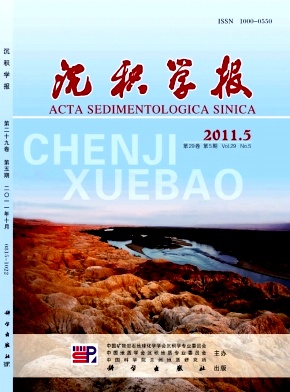Genesis of Lower Ordovician Dolomite in Central Tarim Basin
- Received Date: 1900-01-01
- Rev Recd Date: 1900-01-01
- Publish Date: 2011-10-10
-
Key words:
- dolostone
Abstract: Lower Ordovician dolomites in the central Tarim basin are of various types and extensively distributed. Seven dolostone types could be documented based on fabrics and structures, which are crystalline dolomite, residualgrain dolomite, residual calcite dolomite, algal dolomite,cloudy centers and clear rims dolomite, clitellum dolomite and gypes dolomite. It's characterised by middlehigh δ18O negative value(3.2%~8.7‰), lowmiddle δ13C negative value(3%~0.77‰), and high Z value of 118~123. Most diagenetic temperature calculated by empirical formulas using δ18O values are between 118 to 123℃, which indicates that the temperature degree of dolomitization is low, and so the kind of dolomite belongs to low temperature dolostone. These dolomites have also characteristics of low Mg/Ca and variable Fe/Mn ratio values. According to mineral composition analyzed by electron microprobe, dolomite monomineral can be divided into high Fe content and low Fe content species. 87Sr/86Sr ratios of most samples are low( among 0.708 8~0.709 7), which are similar to seawater strontium isotope composition, and some are of high ratios between 0.710 1 and 0.710 9. These characteristics reveal that the origin of dolomite in the study area can be classified into penecontemporaneous dolomitization and burial dolomitization. According to Ordovican palaeogeographical evolution, the penecontemporaneous dolomitization arised in the seafloor environment, mainly in tidal flats or beach environment. And this kind of dolomite characterised by low diagenetic temperature, low 87Sr/86Sr ratios, and low Fe content dolomite minerals. The burial dolomitization can be interpreted by two diagentic models. One is seepagereflux dolomitization during early shallow burial stage and characterised by low diagenetic temperature but high 87Sr/86Sr ratios, and high Fe content dolomite mineral. Another is deep burial dolomitization which occured in more strong reducible diagenetic enviornment during late deep burial stage. In general, the degree of dolomitization in burial diagentic enviorment is further enhanced and adjusted. The deep burial dolomite is characterised by high diagenetic temperature and high homogenization temperature of fluid inclusions, but low salinity.
| Citation: | LI Pengchun. Genesis of Lower Ordovician Dolomite in Central Tarim Basin[J]. Acta Sedimentologica Sinica, 2011, 29(5): 842-856. |






 DownLoad:
DownLoad: